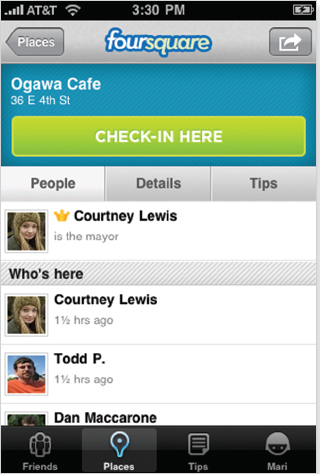Trends in Online Advertising
“Mad Ave better take note—you are digital, or you are very, very unimportant.”
ADVERTISING AGE, 2011
The earliest form of Web advertising appeared in the mid-1990s and featured banner ads, the printlike display ads that load across the top or side of a Web page. Since that time, other formats have emerged, including video ads, sponsorships, and “rich media” like pop-up ads, pop-under ads, flash multimedia ads, and interstitials, which pop up in new screen windows as a user clicks to a new Web page. Other forms of Internet advertising include classified ads and e-mail ads. Unsolicited commercial e-mail—known as spam—now accounts for more than 85 percent of e-mail messages.
Paid search advertising has become the dominant format of Web advertising. Even though their original mission was to provide impartial search results, search sites such as Google, Yahoo!, and (now) Bing have quietly morphed into advertising companies, selling sponsored links associated with search terms and distributing online ads to affiliated Web pages.11
Back in 2004, digital ads accounted for just over 4 percent of global ad spending. By 2012, the Internet had gained an 18 percent share of worldwide ad spending and was projected to become the second-largest global advertising medium in 2013, behind only television. In the United States, the Internet accounted for 19.1 percent of ad spending in 2012, and in that year became the second-largest advertising medium, behind television.12 (See Figure 11.2.) Search ads make up 46 percent of Internet advertising revenues; display/banner advertising accounts for 21 percent; mobile (the fastest-growing segment) accounts for 9 percent; and the rest of the revenues are generated by segments such as classifieds, digital video, sales leads, and e-mail.13
Online Advertising Challenges Traditional Media

Because Internet advertising is the leading growth area, advertising mega-agencies have added digital media agencies and departments to develop and sell ads online. For example, WPP has 24/7 Real Media, Omnicom owns Proximity Worldwide, Publicis has Digitas and Razorfish, and Interpublic operates R/GA. Realizing the potential of their online ad businesses, major Web services have also aggressively expanded into the advertising market by acquiring smaller Internet advertising agencies. Google bought DoubleClick, the biggest online ad server; Yahoo! purchased Right Media, which auctions online ad space; and Microsoft acquired aQuantive, an online ad server and network that enables advertisers to place ads on multiple Web sites with a single buy. Google, as the top search engine, has surpassed the traditional mega-agencies in revenue, earning $50.2 billion in 2012, with $46 billion of that coming from advertising. In 2012, Google’s mobile ad earnings were around $4.6 billion, about half of mobile ad revenues worldwide. Facebook, the top social networking site, is not yet in Google’s league but is poised to become an advertising force with its audience of over 1.06 billion users worldwide. In 2012, Facebook earned $4.3 billion from ads.14
As the Internet draws people’s attention away from traditional mass media, leading advertisers are moving more of their ad campaigns and budget dollars to digital media. For example, the CEO of consumer product giant Unilever, a company with more than four hundred brands (including Dove, Hellmann’s, and Lipton) and a multibillion-dollar advertising budget, vowed to double its spending on digital media in 2010, since customers spend more time on the Internet and mobile phones. “I think you need to fish where the fish are,” the Unilever CEO said. “So I’ve made it fairly clear that I’m driving Unilever to be at the leading edge of digital marketing.”15
Online Marketers Target Individuals
VideoCentral  Mass Communication
Mass Communication

Advertising in the Digital Age
This video discusses how ads evolve to overcome resistance to advertising.
Discussion: Do you recall many ads from the last few times you used the Internet? What do you think this might mean for advertisers?
Internet ads offer many advantages to advertisers, compared to ads in traditional media outlets like newspapers, magazines, radio, or television. Perhaps the biggest advantage—and potentially the most disturbing part for citizens—is that marketers can develop consumer profiles that direct targeted ads to specific Web site visitors. They do this by collecting information about each Internet user through cookies (see Chapter 2 for more on cookies) and online surveys. For example, when an ESPN.com contest requires you to fill out a survey to be eligible to win sports tickets, or when washingtonpost.com requires that you create an account for free access to the site, marketers use that information to build a profile about you. The cookies they attach to your profile allow them to track your activities on a certain site. They can also add to your profile by tracking what you search for and even by mining your profiles and data on social networking sites. Agencies can also add online and retail sales data (what you bought and where) to user profiles to create an unprecedented database, largely without your knowledge. Such data mining is a boon to marketers, but it is very troubling to consumer privacy advocates.
Internet advertising agencies can also track ad impressions (how often ads are seen) and click-throughs (how often ads are clicked on). This provides advertisers with much more specific data on the number of people who not only viewed the ad but also showed real interest by clicking on it. For advertisers, online ads are more beneficial because they are more precisely targeted and easily measured. For example, an advertiser can use Google AdWords to create small ads that are linked to selected key words and geographic targeting (from global coverage to a small radius around a given location). AdWords tracks and graphs the performance of the ad’s key words (through click-through and sales rates) and lets the advertiser update the campaign at any time. This kind of targeted advertising enables smaller companies with a $500 budget, for example, to place their ads in the same location as larger companies with multimillion-dollar ad budgets.
Beyond computers, smartphones—the “third screen” for advertisers—are of increasing importance. Smartphones offer effective targeting to individuals, as does Internet advertising, but they also offer advertisers the bonus of tailoring ads according to either a specific geographic location (e.g., a restaurant ad goes to someone in close proximity), or the user demographic, since wireless providers already have that information. Google has also developed unique applications for mobile advertising and search. For example, the Google Goggles smartphone app enables the user to take a photo of an object such as a book cover, a landmark, a logo, or text, and then have Google return related search results. Google’s Voice Search app lets users speak their search terms. Such apps are designed to maintain Google’s dominant Web search-engine position (which generates most of its profits) on the increasingly important mobile platform.
Advertising Invades Social Media

Social media, such as Facebook, Twitter, and Foursquare, provide a wealth of data for advertisers to mine. These sites and apps create an unprecedented public display of likes, dislikes, locations, and other personal information. And advertisers are using such information to further refine their ability to send targeted ads that might interest users. Facebook and other sites like Hulu go even further by asking users if they liked the ad or not. For example, clicking off a display ad in Facebook results in the question “Why didn’t you like it?” followed by the choices “uninteresting,” “misleading,” “offensive,” “repetitive,” and “other.” All that information goes straight back to advertisers so they can revise their advertising and try to engage you the next time. Beyond allowing advertisers to target and monitor their ad campaigns, most social media encourage advertisers to create their own online identity. For example, Ben & Jerry’s Ice Cream’s Facebook page has more than 7 million “friends.” Despite appearances, such profiles and identities still constitute a form of advertising and serve to promote products to a growing online audience for virtually no cost.
Companies and organizations also buy traditional paid advertisements on social media sites. A major objective of their paid media is to get earned media, or to convince online consumers to promote products on their own. Imagine that the environmental group the National Resources Defense Council buys an ad on Facebook that attracts your interest. That’s a successful paid media ad for the Council, but it’s even more effective if it becomes earned media—that is, when you mark that you “Like” it, you essentially give the organization a personal endorsement. Knowing you like it, your friends view it; as they pass it along, it gets more earned media and eventually becomes viral—an even greater advertising achievement. As the Nielsen Media rating service says about online earned media, “study after study has shown that consumers trust their friends and peers more than anyone else when it comes to making a purchase decision.”16 Social media are helping advertisers use such personal endorsements to further their own products and marketing messages—basically, letting consumers do the work for them.
“In order to advertise on Facebook, advertisers give us an ad they want us to display and tell us the kinds of people they want to reach. We deliver the ad to people who fit those criteria without revealing any personal information to the advertiser.”
SHERYL SANDBERG, FACEBOOK CHIEF OPERATING OFFICER, 2010
A recent controversy in online advertising is whether people have to disclose if they are being paid to promote a product. For example, bloggers often review products or restaurants as part of their content. Some bloggers with large followings have been paid (either directly or by “gifts” of free products or trips) to give positive reviews or promote products on their site. When such instances, dubbed “blog-ola” by the press, came to light in 2008 and 2009, the bloggers argued that they did not have to reveal that they were being compensated for posting their opinions. At the time, they were right. However, in 2009 the Federal Trade Commission released new guidelines that require bloggers to disclose when an advertiser is compensating them to discuss a product. In 2010, a similar controversy erupted when it was revealed that many celebrities were being paid to tweet about their “favorite” products. One of Facebook’s more recent ad ventures is called “sponsored stories.” The way this works is that companies, including Amazon, “pay Facebook to generate … automated ads” when a user clicks on the “Like” button for a Facebook participating brand partner or “references them in some other way.” Sponsors and product companies like this service because they save money since “no creative work is involved.” However, in 2012 this practice resulted in Facebook settling a state of California class action suit out of court. The lead plaintiff in the case, a costume designer from Seattle, innocently clicked the “Like” button for an online language course offered by Rosetta Stone. Then several months later “she showed up in an ad for Rosetta Stone on her friends’ Facebook pages.”17 Part of the case was her resentment about being used in an ad she had not consented to do nor for which she was paid. As new ways to advertise or sponsor products through social media continue to develop, consumers need to keep a careful eye out for what is truly a friendly recommendation from a friend and what is advertising.